Recent Articles
Popular Makes
Body Types
2021 Kia Seltos vs. 2020 Mazda CX-30
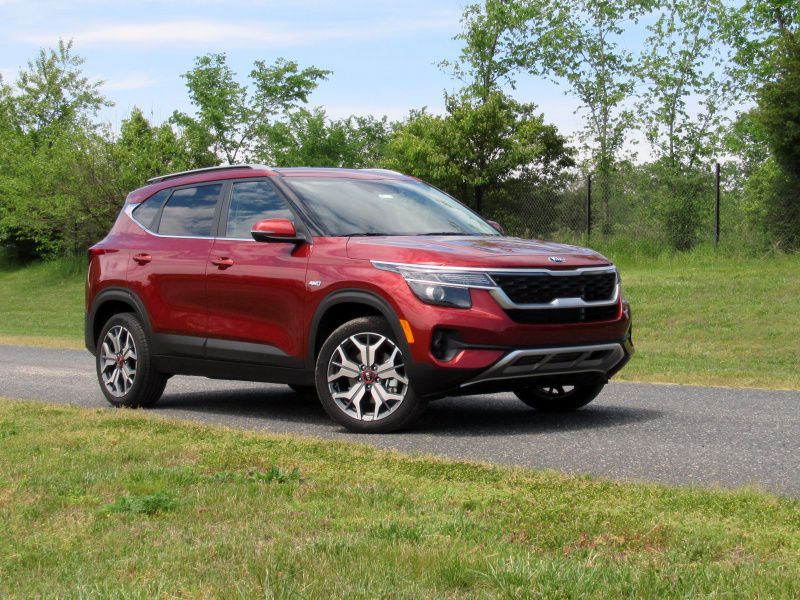
2021 Kia Seltos S Turbo ・ Photo by Brady Holt
Today’s compact crossovers are great cars. The best ones offer unexpectedly huge interiors, quiet rides, and great gas mileage — all at relatively affordable prices. But if you want something smaller or less expensive, a growing crop of subcompact crossovers is ready to compete for your business.
Two of the newest subcompact crossovers are the 2021 Kia Seltos and the 2020 Mazda CX-30. The Seltos fits between the smaller, front-wheel-drive-only Kia Soul and the larger Kia Sportage; the confusingly named CX-30 fits between the older, slightly smaller CX-3 and the larger CX-5. Both these crossovers offer a lot of bang for the buck, but in different ways. In the pages that follow, we’ll break out how the Seltos and CX-30 differ from each other, and choose an overall winner.
Exterior Design
The Seltos and CX-30 have mostly similar dimensions, except that the Kia is about 2 inches taller than the Mazda. That’s already enough to give the CX-30 a low-slung vibe compared to the more upright Kia. The CX-30 also has a longer nose than the Seltos and it hunches forward toward the rear, while the Seltos is more box-like.
Aside from their shapes, the CX-30 is designed to look elegant while the Seltos has a more cheekily rugged vibe. You’ll see that in the Mazda’s gentle curves versus the Seltos’ extra plastic cladding and the way its bumpers are styled to look like skid plates. Neither of these is a true off-road machine — turn to the Subaru Crosstrek or Jeep Renegade for a mud-thrashing subcompact — so this is more about the vibe these vehicles try to present. We won’t pick for you, so this category is a tie.
Tie
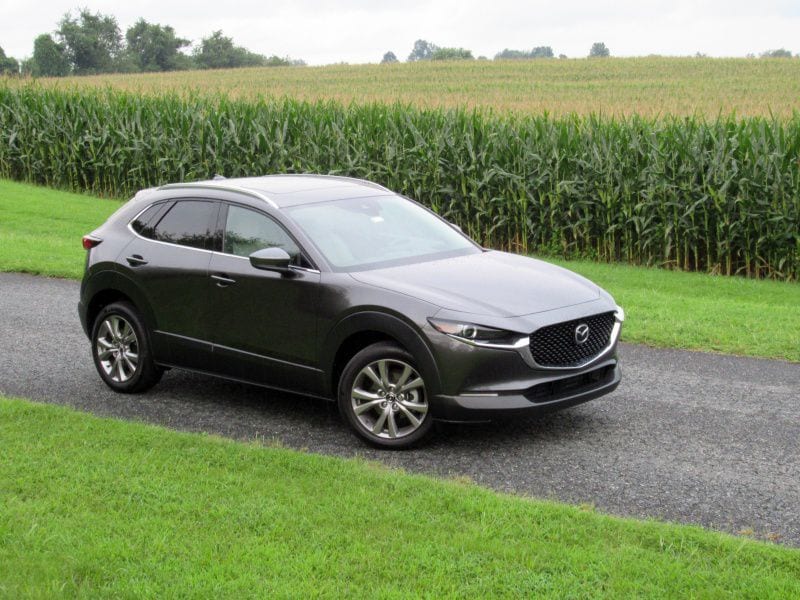
Photo by Brady Holt
Interior Design
The CX-30 and Seltos also have a different vibe inside. The CX-30 has the minimalist vibe of a modern luxury car, with audio controls shifted off the center stack to the console between the front seats. That means the dashboard just has the climate controls and the big 8.8-inch infotainment screen. The Seltos is more conventional, with simpler, easier-to-use buttons and knobs — but not a lot of panache or design flair. Most Seltos trim levels, including our S Turbo test vehicle, have 8-inch touchscreens; the top SX upgrades to a 10.25-inch touchscreen.
While you’ll again choose your aesthetic between the two cars, the CX-30 wins this round for its richer interior materials. The Kia is well-built, but mostly from hard, basic plastics. The Mazda has posh, soft-touch surfaces, and its moving parts glide with luxury-grade precision. You won’t find a fancier-feeling crossover interior for less than $30,000.
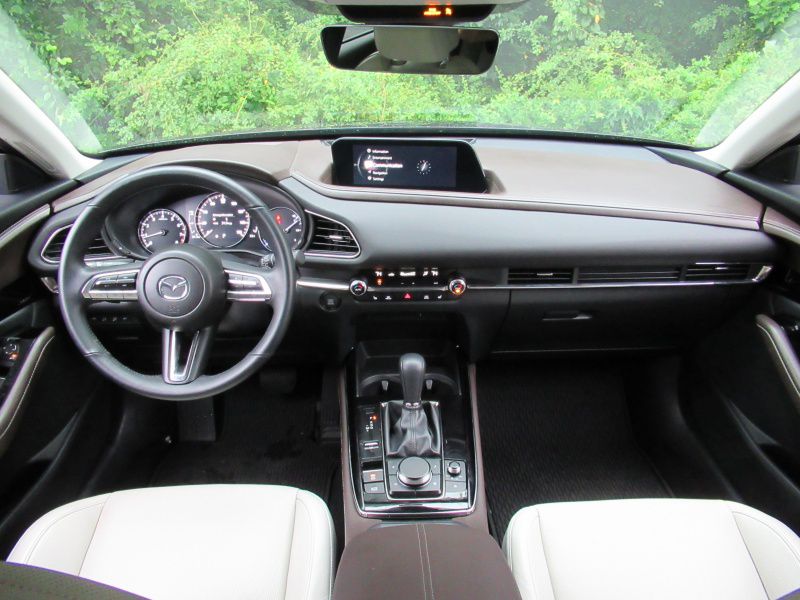
Photo by Brady Holt
Interior Comfort
Even those are subcompact vehicles, both the CX-30 and Seltos can fit tall adults easily into their front seats. The CX-30’s sense of luxury extends to the leather or leatherette upholstery that’s standard on all but that base model, but there’s nothing special to the shape of the front seats. The Mazda3 compact car, closely related to the CX-30, has more enveloping front seats for a sportier, more upscale feel. The Seltos has a higher seating position than the CX-30, along with more headroom and much better outward visibility through its bigger windows.
An even bigger difference is in the back seat. The CX-30 has a well-shaped cushion but limited leg space unless the front seats are moved well forward. Unlike most subcompact crossovers, the Seltos can fit four taller adults without issue, and five in a pinch. It’s also easier to get in and out of the Kia than the Mazda.
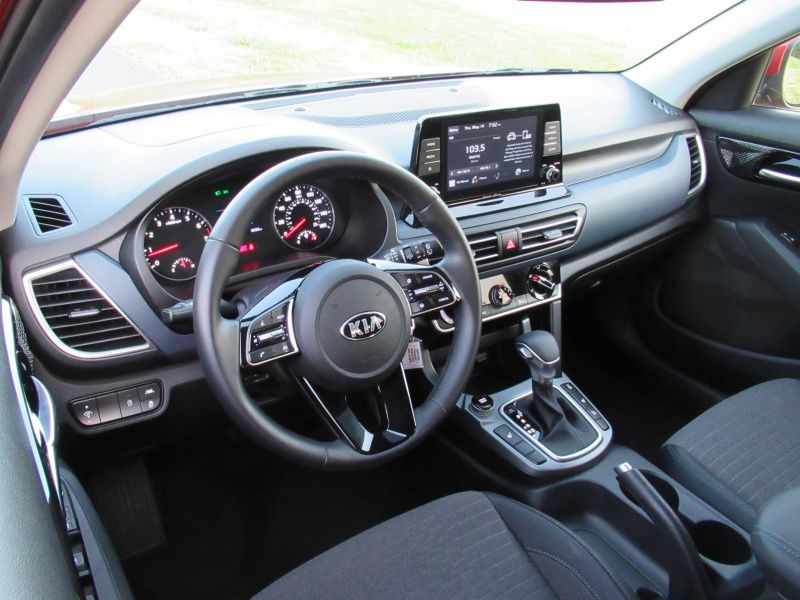
Photo by Brady Holt
Cargo Capacity
The Seltos’ interior spaciousness advantage extends to the cargo capacity. This is still a subcompact crossover, with less cargo room than the best-selling Honda CR-V or Toyota RAV4 compact models. But unlike most subcompacts, it at least comes somewhat close, with 26.6 cubic feet behind the rear seat and 62.8 cubic feet with the rear seat folded. Credit its boxy shape; most competitors, like the CX-30, have sharply sloped rear ends that rob cargo room.
The CX-30 is more typical for the subcompact class. You get 20.2 cubic feet of cargo room behind the rear seat — there’s enough space on the floor for plenty of groceries, but you don’t have the height clearance for bulky items until you’ve folded the rear seat down. Dogs would also prefer the Kia. Total cargo volume in the CX-30 is 45.2 cubic with the rear seat folded. Neither vehicle is rated to tow a trailer.
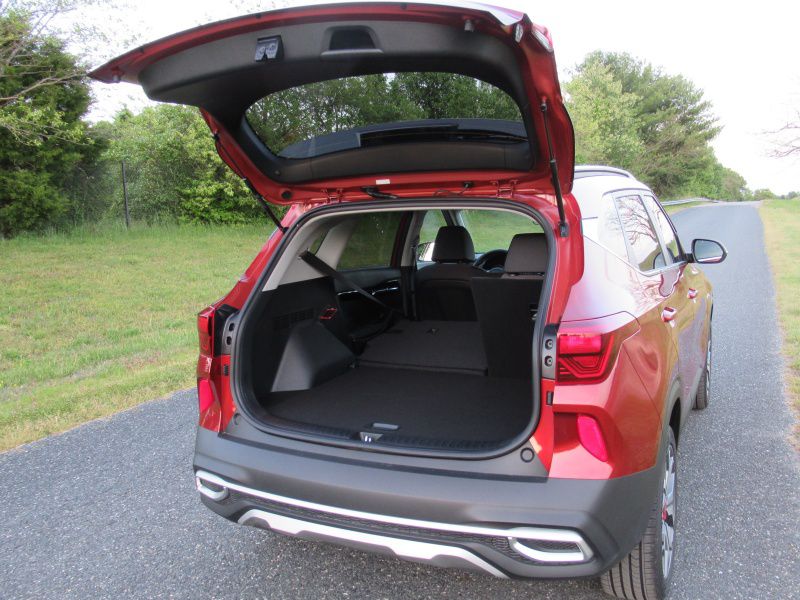
Photo by Brady Holt
Driving Experience
Mazda is known for its sporty driving experience, so we’d forgive you for expecting the CX-30 to take this category. But in our experience — and, to be clear, opinions differ on this point — the CX-30 doesn’t have the fun-to-drive nature you’d find in Mazda’s smaller CX-3 or the Mazda3. Light steering makes the CX-30 easy to drive, but it doesn’t provide an intimate connection to the road. To us, the Seltos feels more eager and agile, at the expense of a slightly bumpier, noisier ride.
In a straight line, the CX-30 wins on paper with its big 2.5-liter 186-horsepower four-cylinder engine. That’s compared with the Seltos’ standard 2.0-liter 146-horsepower four-cylinder. Still, the lighter Kia doesn’t lag too far behind the Mazda’s acceleration — the CX-30’s big advantage over the base Seltos is that it’s quieter, not that it’s quicker. Plus, you can upgrade the Seltos to a zesty 175-hp 1.6-liter turbo four. It’s smoother and quicker than the CX-30. Mazda plans to introduce a 250-hp turbo in the CX-30 in late 2020 for the 2021 model year, but it’s expected to be expensive.
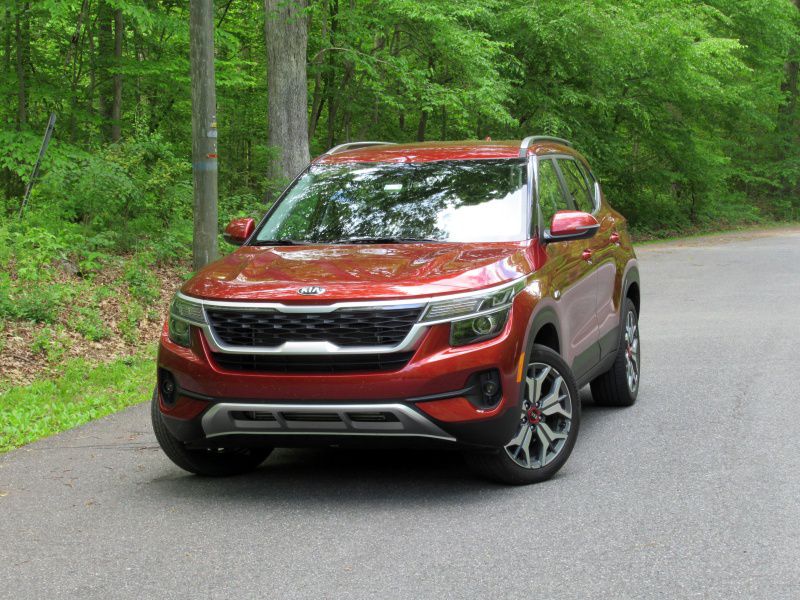
Photo by Brady Holt
Fuel Economy
The Seltos’ light weight pays off for its fuel economy as well as its acceleration. The base 2.0-liter engine achieves excellent EPA estimates of 29 mpg in the city, 34 mpg on the highway, and 31 mpg combined with front-wheel drive, and 27 mpg city, 31 mpg highway, and 29 mpg combined with all-wheel drive. The AWD-only Seltos turbo scores 25 mpg city, 30 mpg highway, and 27 mpg combined. Our turbocharged test vehicle beat those EPA estimates to average 31 mpg in a weeklong test.
The CX-30’s EPA ratings are 25 mpg city, 33 mpg highway, and 28 mpg combined with front-wheel drive. Most AWD models score 24 mpg city, 31 mpg highway, and 26 mpg combined. That’s worse than many competitors, including the speedier turbocharged Seltos. The top Premium trim level, like our test vehicle, improves by 1 mpg thanks to a cylinder-deactivation system. Our AWD Premium averaged 31 mpg, like the Seltos turbo. We haven’t measured mileage in the thriftier 2.0-liter Seltos, but the EPA ratings point to victory.
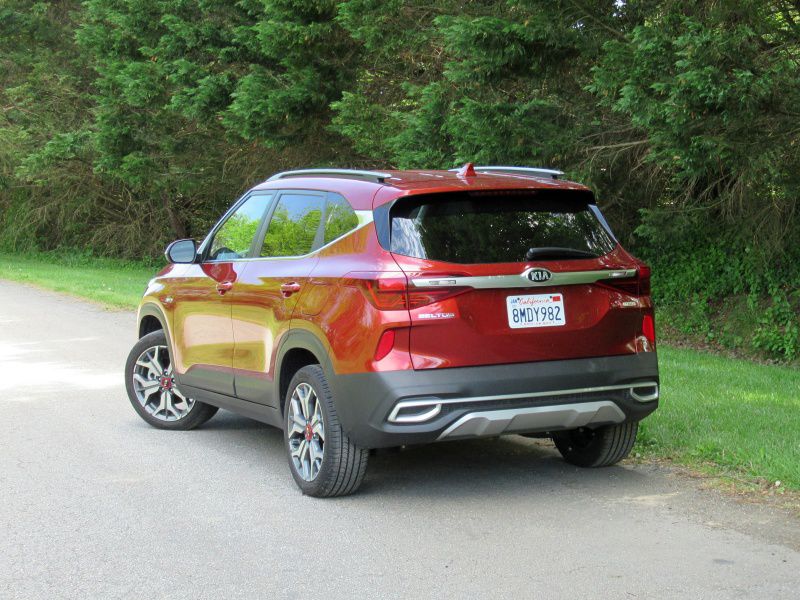
Photo by Brady Holt
Safety
Most versions of the Mazda CX-30 earn an IIHS Top Safety Pick designation from the Insurance Institute for Highway Safety, reflecting exemplary performance in crash tests and collision avoidance. Its only blemish is headlights that score Poor for excessive glare in the top Premium trim level, but other models’ headlights earn the top rating of Good. The CX-30 also earned a top five-star rating from the National Highway Traffic Safety Administration.
The Seltos’ scores are also generally impressive, but it slips behind the Mazda. A four-star frontal-impact score for passenger-side protection also helped drop the Kia’s overall NHTSA rating to four out of five stars. And its headlights score Poor in all trim levels. The Seltos aced the rest of the IIHS evaluations, including the tough passenger-side small-overlap crash test and its automatic pedestrian-avoidance capability. But the CX-30 did even better. Also, Mazda provides automatic emergency braking, lane-keeping assistance, and adaptive cruise control as standard equipment on all trim levels. Kia leaves the first two off its base LX trim level (which, admittedly, costs less than the cheapest all-wheel-drive CX-30), and only the top SX Turbo includes adaptive cruise control.
Mazda CX-30
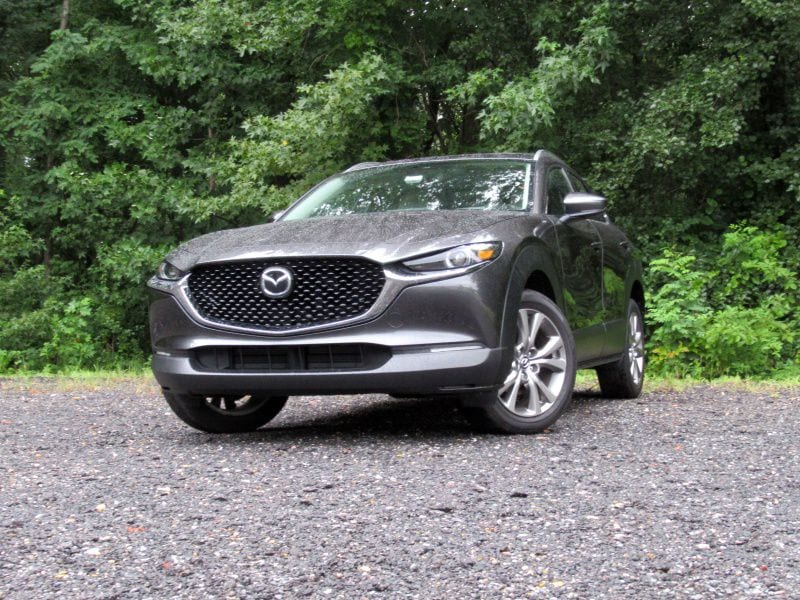
Photo by Brady Holt
Pricing and Features
Kia is known for bringing lots of features for the money, and the Seltos generally impresses. At just $21,990, you can get either the base LX with standard AWD or the next-up S with front-wheel drive, more features, and the option to buy the turbo engine. The leatherette-trimmed EX AWD is generously equipped at $25,290, and the top SX Turbo AWD adds more power, adaptive cruise control, and the huge infotainment screen at $27,890.
As impressive as that is, the CX-30 has even more. It starts at $21,900 with eight speakers to the Seltos’ six, adaptive cruise control, and rain-sensing windshield wipers. As you move up the trim levels, you can also get features unavailable on any Seltos: genuine leather, a head-up display, a power liftgate, and memory settings for the power seats. Until 2021, you can’t get Android Auto and Apple CarPlay on the base CX-30, and the turbo engine will likely be expensive when it arrives. And you can get AWD for less money on the Seltos than the CX-30. Still, Mazda generally gives you more features for the money, along with the opportunity to spend a little extra for even more luxury.
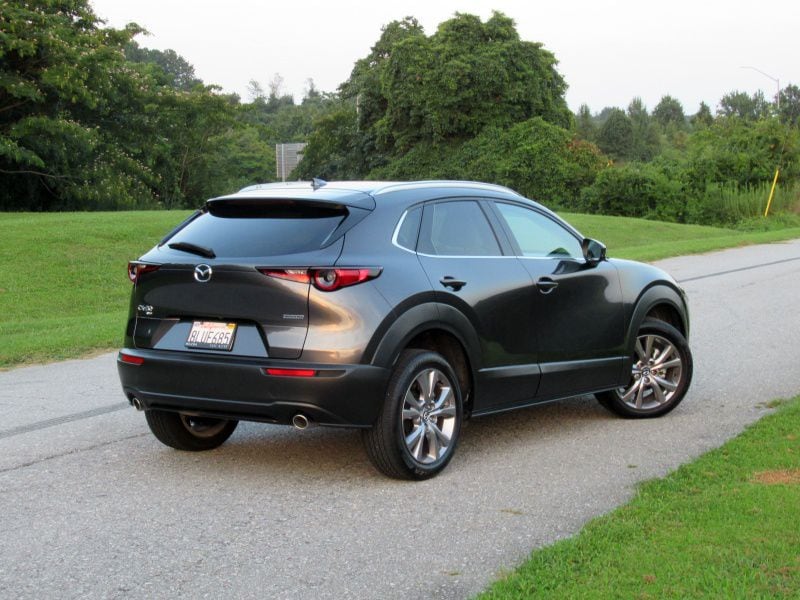
Photo by Brady Holt
Final Thoughts
What makes the better subcompact crossover — elegance, high-end features, and top-notch cabin materials, all at reasonable prices? Or everyday spaciousness, comfort, practicality, user-friendliness, and overall utility, at similar prices?
For our money, the Seltos is hard to beat. It’s useful yet also fun to drive, affordable, and fuel-efficient. True, the Mazda’s slightly higher safety scores, extra amenities, and beautifully finished interior are tempting. But if we didn’t need much space, we’d happily buy the similarly sized Mazda3 hatchback instead — it has livelier handling, more supportive front seats, and even optional all-wheel drive. The CX-30 may give the Seltos a run for the money as a car, but Kia built the better SUV.
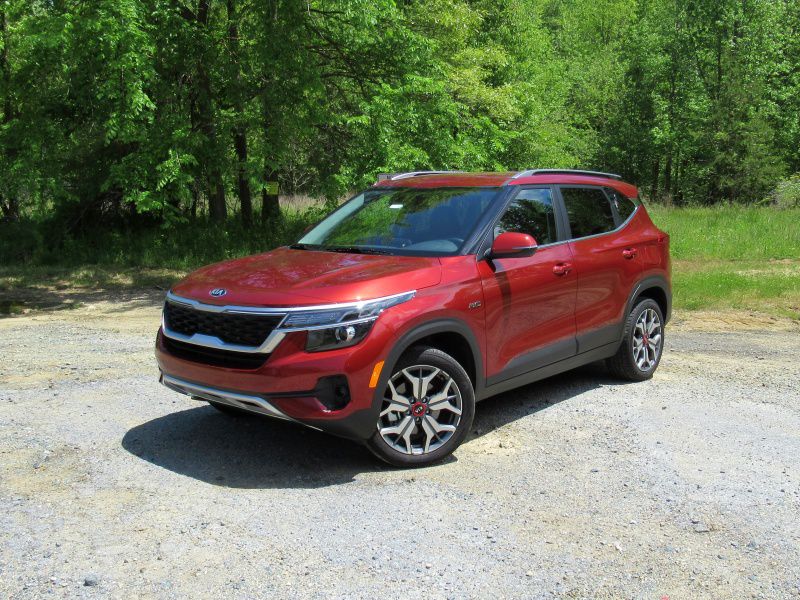
Photo by Brady Holt